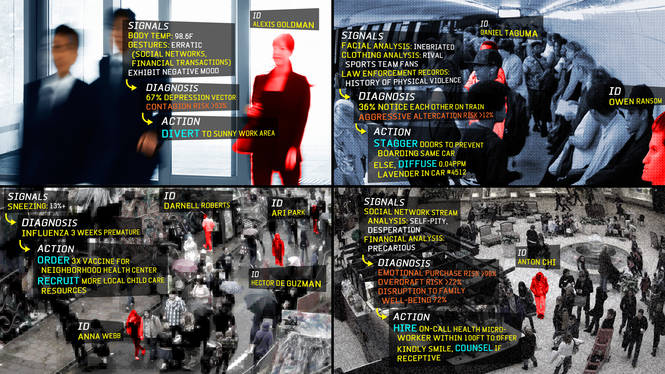Future Now
The IFTF Blog
Artifact from the Future: Public Health Automation

In 2012, public health data was collected from a wide range of new and old information sources is used to support public health initiatives and policies that respond to health threats after the fact. In 2032, the role of public health surveillance expands from monitoring and collecting data to creating actuating systems that can respond proactively to early signals.
Public Health Automated & Locally Manifested (PHALM) manages the city’s health collectively by scanning all citizens who have opted in to the system, looking for threats to individual and collective health, and taking subtle actions to neutralize them.
With one of its 5,342 eyes, Public Health Automated & Locally Manifested, or PHALM for short, spots a person with a worrisome body temperature. PHALM identifies the person as Alexis Grajeda Goldman, an employee at Qool Software. It checks her social network feeds and monitors her body’s movements. It then cross-references this information with Alexis’s recent financial transactions, the weather in the neighborhood where she lives, and her commute conditions. PHALM denies her entry into the office.
“Alexis, please head to the west veranda and work at a table with an uplifting view. I’ll let you know the best time to go join your coworkers.”
Read the full story in this report [PDF].
Would you opt in to PHALM? Let us know on Twitter with the hashtag #artifact and #future.

This Artifact from the Future is a snapshot of what might emerge if forecasts about the future materialize. It was developed as part of our 2012 Health Horizons Research, which looked at health and well-being from an ecosystems lens, emphasizing the interactions between our bodies, networks, and environments. Like all IFTF’s Artifacts from the Future, this image offers insights into future everyday lives and is intended to give you an immersive look at a possible future change.



